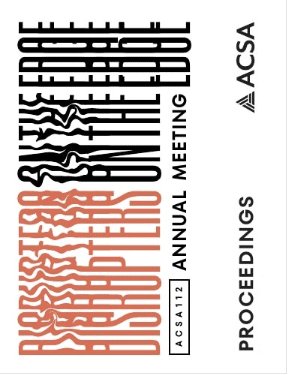Author(s): Babita Joy
Coast Salish tribes of the PNW are known for their distinct communal and ceremonial built spaces. Many educational campuses in the US stand on lands historically occupied by Indigenous people, who over time have been displaced, stolen from, and erased from the physical environment. This paper traces the origins and growth of the now commonly seen Native American cultural centers on university campuses in the US. This research examines the materiality of the Centers as places of making visible the marginalized Native diaspora and it emphasizes the design voices involved in the making. This paper focuses its attention on three Indigenous cultural centers in the PNW: The Intellectual House at the University of Washington, Seattle campus; The House of Welcome, the first purpose-built Native Center on a public university campus in the US on the Evergreen State College campus in Olympia, Washington; and the Many Nations Longhouse on the University of Oregon campus in Eugene, Oregon. All three centers were designed by Johnpaul Jones of the firm Jones and Jones. A Native American (Choctaw/Cherokee) and a 2013 recipient of the National Humanities Medal, Jones designed each of these centers with a strong indigenous materiality focus. The Native Centers stand as a statement of resistance, becoming the locators and indicators of the dynamics between cultural identities, political powers, and settler-colonial dominant forces surrounding them. This paper argues that while historiography of indigeneity often suggests the ephemeral, i.e., stories, songs, folklore, etc., these centers underscore a contemporary architectural history for indigeneity reflecting the often marginalized native worlds. This research focuses on how materiality-focused designs embody indigenous identity, support a space for belonging in competitive and global university campuses, and enable a cultural reparative agenda for a people relegated to the edges of physical environments or are most often made invisible.
https://doi.org/10.35483/ACSA.AM.112.47
Volume Editors
Germane Barnes & Blair Satterfield
ISBN
978-1-944214-45-6

 Study Architecture
Study Architecture  ProPEL
ProPEL 
